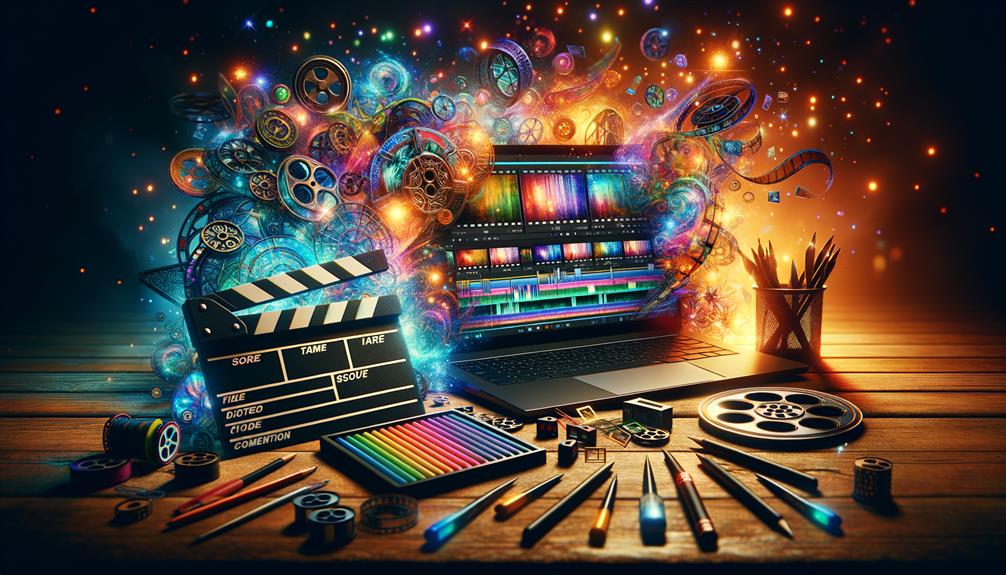Introduction
Animated instructional videos have emerged as a pivotal tool in education and training, revolutionizing how we absorb and impart knowledge. These videos stand out for their ability to turn complex and often mundane topics into engaging, visually appealing narratives. Their rise in popularity is a clear indicator of their effectiveness in enhancing learning experiences. This article aims to provide an in-depth exploration of creating the best animated instructional videos, including types, benefits, and much more. Without further ado, let’s dive in.
The art of creating effective animated instructional videos
Creating an effective animated instructional video is akin to crafting a fine piece of art. It requires a delicate balance of creativity, technical skill, and a deep understanding of educational methodologies. The key to success lies in the ability to combine visually captivating elements with clear, concise, and coherent audio narrations. This fusion not only captures the attention of learners but also facilitates better comprehension and retention of information, making the learning process both enjoyable and effective.
This animated instructional video for Asana is a great example of educating while captivating with beautiful visuals:
Benefits of animated instructional videos
Animated instructional videos offer a multitude of benefits that significantly enhance the learning experience, making them a valuable asset in both educational and corporate settings. These benefits extend beyond mere visual appeal, impacting the way information is processed, understood, and retained.
Improved engagement and interest: One of the most notable advantages of animated videos is their ability to capture and maintain the learner’s interest. The combination of visuals, motion, and sound creates a rich, engaging experience that can make even the most complex or dry topics captivating. This heightened engagement is crucial in today’s fast-paced world where attention spans are often challenged.
Enhanced retention: Animated videos leverage the power of visual learning, which is known to significantly boost memory retention. By presenting information through both auditory and visual channels, these videos facilitate a deeper encoding of knowledge into the memory. The use of storytelling and relatable characters in animations can also create emotional connections, further enhancing the likelihood of remembering the content.
Simplification of complex concepts: Complex ideas and abstract concepts can be difficult to convey through traditional text-based methods. Animated videos have the unique ability to break down these complexities into simpler, more digestible visual representations. Through the use of metaphors, symbolic imagery, and simplified illustrations, learners can grasp difficult concepts more easily.
Accessibility and inclusivity: Animated videos can be designed to cater to a diverse range of learning styles and needs, making education more inclusive. They can include features such as subtitles for the hearing impaired or be created in multiple languages to reach a broader audience. Additionally, animations can depict a diverse range of characters and scenarios, promoting inclusivity and cultural sensitivity.
Flexibility and versatility: The versatility of animated videos makes them suitable for a wide range of subjects and age groups. Whether it’s for young children, university students, or professionals in corporate training programs, animations can be tailored to suit the specific audience. This flexibility extends to the ability to update or modify content as needed, ensuring that the information remains current and relevant.
Cost-Effective and time-efficient: In comparison to live-action videos, animated videos can be more cost-effective and quicker to produce, especially when depicting scenarios that would be impractical or expensive to film in real life. Once the initial assets are created, they can be reused and reconfigured for different purposes, providing long-term value.
Enhanced creative expression: Animation allows for boundless creative expression, enabling educators and trainers to bring their ideas to life in ways that might not be possible with other mediums. This creative freedom allows for the creation of unique, memorable content that stands out and resonates with learners.
Gisteo created this instructional video for Loyola Marymount University alumni and employees in order to help them deliver a better “elevator pitch” about the university:
Design principles
Effective educational animations are grounded in solid design principles. Storytelling techniques, coupled with thoughtful color schemes and visual composition, play a crucial role in creating compelling educational content. These principles ensure that the animations are not only informative but also aesthetically pleasing.
This instructional explainer for Figma is a great example of implementing great design into a video. Afterall, it’s kind of their business model!
Technological tools for creating animated videos
The landscape of software and applications for creating animated instructional videos is rich and diverse, catering to a wide range of needs and skill levels. These tools, continually evolving through technological innovations, offer creators an array of functionalities to bring their educational visions to life. From simple, user-friendly platforms to advanced, feature-rich applications, the choices available enable educators, animators, and content creators to produce high-quality animations tailored to their specific goals.
Beginner-friendly animation tools: For those new to animation, there are several intuitive and easy-to-use platforms. Tools like Vyond (formerly GoAnimate) and Powtoon offer drag-and-drop interfaces, pre-built characters, and customizable templates, making it simple for beginners to create professional-looking videos without extensive technical knowledge. These platforms are particularly popular in educational and corporate settings for their ease of use and quick turnaround times.
Advanced Animation Software: For more experienced animators seeking greater control and sophistication, software like Adobe After Effects, Adobe Premier, and Autodesk Maya provides a comprehensive suite of tools. These applications offer advanced features such as 3D modeling, complex character rigging, and detailed motion graphics capabilities. While they have a steeper learning curve, the level of customization and quality they can produce is unparalleled. For example, to create an instructional video like this explainer for Google Assistant, you’d want to use one of the above-mentioned tools.
Open-Source Options: Open-source software like Blender and Synfig Studio presents a cost-effective alternative for creating animated videos. These programs offer robust features, including 3D animation, rigging, and rendering, without the associated costs of commercial software. They are supported by communities of developers and users, providing a wealth of tutorials and resources for learning and troubleshooting.
Specialized Tools for Specific Needs: Depending on the specific requirements of the project, there are tools specialized in certain types of animation. For instance, Toon Boom Harmony is renowned for its traditional animation capabilities and is widely used in the professional animation industry. Similarly, Moho (formerly Anime Studio) is favored for its vector-based animation tools, ideal for creating cartoons and 2D animations.
Integration with Other Educational Tools: Many animation tools offer integration with other educational software and platforms. For example, animations created in certain software can be easily imported into e-learning platforms like Moodle or integrated with presentation tools like PowerPoint, enhancing the overall educational content.
Understanding the audience
Tailoring animated videos to suit different learners is crucial. Designing age-appropriate content and adapting to various learning styles ensures that the animations are effective for a wide range of audiences. Gisteo created this example for Rayonier to use to educate young people on the effects of carbon emissions on the environment. It’s purposeful playful and cartoonish as it caters to a younger audience:
On the other hand we produced this training video to educate new employees at CompleatKidz and it utilizes a different tone and approach:
Future trends in animated instructional videos
The future of animated instructional videos is poised for transformative changes, driven by advancements in emerging technologies such as Artificial Intelligence (AI) and Virtual Reality (VR). These innovations are not just enhancing the quality and capabilities of animated videos but are also redefining the ways in which educational content is delivered and experienced. Here’s a closer look at how these technologies are shaping the future of animated instructional videos:
Artificial Intelligence (AI) in animation: AI is playing a significant role in automating and enhancing various aspects of animation. AI algorithms can assist in creating more lifelike and natural animations, reducing the time and effort required for manual animation. For instance, AI can be used for automatic lip-syncing of characters to voiceovers, making the process faster and more efficient. Additionally, AI-driven analytics can be employed to personalize learning experiences, where the content of the videos adapts to the learning pace and style of individual users.
Virtual Reality (VR) for immersive learning: VR technology is set to revolutionize animated instructional videos by creating fully immersive learning environments. VR allows learners to interact with 3D animated content in a virtual space, offering a highly engaging and interactive form of learning. This can be particularly effective for subjects that require experiential learning, such as science experiments, historical explorations, or medical procedures. VR also enables the simulation of real-life scenarios that would be impossible or impractical to experience otherwise.
Augmented Reality (AR) integration: Augmented Reality (AR) is another technology enhancing animated instructional videos. AR can overlay animated content onto the real world, providing a blended learning experience. This can be particularly useful in educational settings where physical interaction with the learning material enhances understanding, such as in anatomy education or mechanical engineering.
Adaptive learning through AI: AI technology can make animated instructional videos adaptive. By analyzing learner responses and engagement levels, AI can modify the content in real-time to suit the learner’s needs, ensuring a more effective and personalized learning experience. This adaptive learning approach can cater to different learning speeds and styles, making education more inclusive.
Interactive and gamified learning experiences: The integration of interactive elements and gamification into animated videos is another trend gaining traction. By incorporating game-like elements and interactive scenarios, learners can engage more deeply with the content, enhancing both learning and retention. This approach can make learning more enjoyable and motivating, especially for younger audiences.
Advanced data analytics for improved content: With the integration of AI and machine learning, animated instructional videos can benefit from advanced data analytics. These analytics can provide insights into how learners interact with the videos, what content is most effective, and how the learning process can be improved. This data-driven approach can help educators and creators refine their content for maximum impact.
Creating custom animated instructional videos
For those seeking a more personalized touch, creating custom animated instructional videos is a viable option. This involves understanding the steps and tips for crafting content that resonates with specific audiences, often requiring collaboration with expert video creators and animators like us here at Gisteo. Schedule a consultation here if you’d like to discuss a possible project.
FAQs
- What makes an animated instructional video effective? An effective animated instructional video is one that clearly conveys its educational message through engaging visuals and coherent narration. It should be designed considering the target audience’s learning style and preferences.
- Can animated videos replace traditional teaching methods? While animated videos are a powerful educational tool, they are best used as a supplement to traditional teaching methods. They enhance the learning experience but cannot completely replace the interactive and adaptive nature of classroom learning.
- How can educators measure the impact of animated instructional videos? Educators can measure the impact of these videos through student feedback, assessments, and observing improvements in engagement and understanding of the subject matter.
- Are animated instructional videos suitable for all age groups? Yes, animated instructional videos can be tailored to suit all age groups. The key is to adjust the content complexity and presentation style according to the age and comprehension level of the audience.
- What are the challenges in creating animated instructional videos? Some challenges include balancing educational content with engaging visuals, ensuring technical quality, and keeping the content accessible and inclusive for all learners.
- How has technology influenced the development of animated instructional videos? Technology has drastically transformed animated instructional videos, making them more interactive, visually appealing, and accessible. Advances in software and animation tools have also made it easier to create high-quality educational content.
Conclusion
In conclusion, the best animated instructional videos represent a dynamic and impactful tool in the realm of education and training. Their ability to simplify complex information and engage learners visually makes them an invaluable asset. As technology continues to advance, we can expect these videos to become even more interactive and tailored to individual learning needs, paving the way for a more engaging and effective educational experience.



